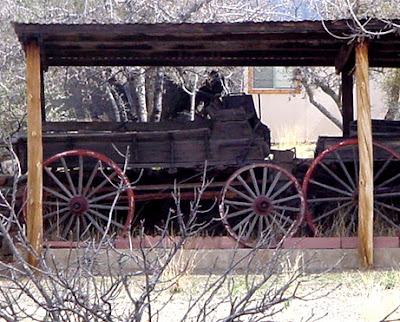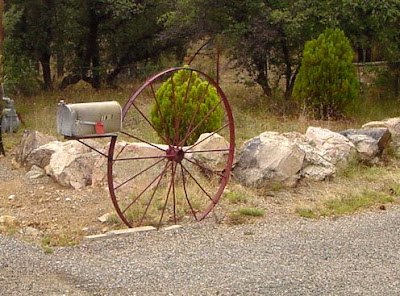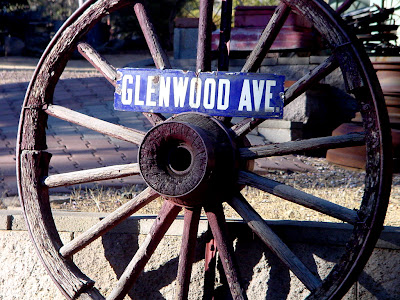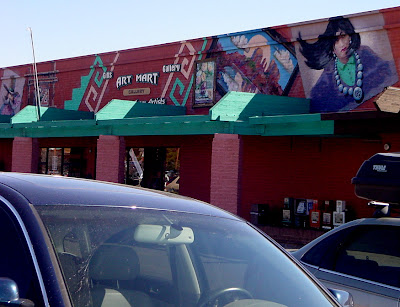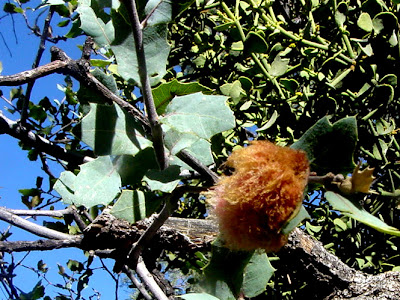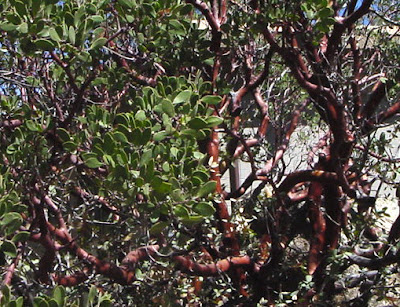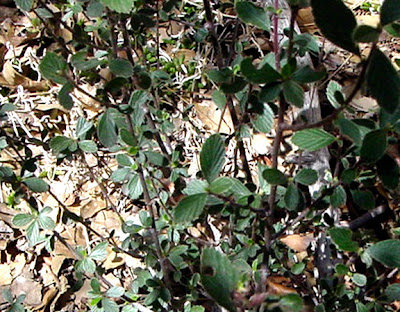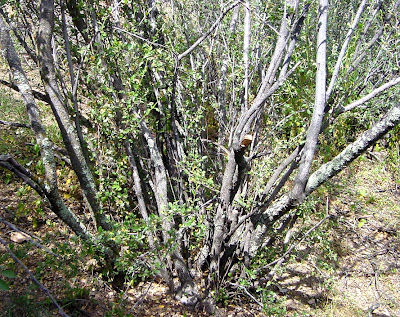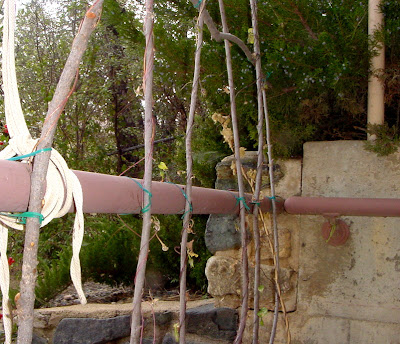
Getting to Skull Valley is easy. Just turn left onto Iron Springs Road and keep driving. After a few mountains, the highway leaves PNF forest land, the road narrows and downhill on the left is a valley that's green and lush, compared to the sere roadside. The outskirts. Important fact about this ranching community -- it has possibly the best water availability in the whole county.

Ahead on your right looms a dark, rounded mountain. Volcanic, obviously; mountains built of other kinds of stone (granite, schist or even limestone) display their rocky origins in a muscular way. Do take note of the two dimpled blowout spots. Busy mountain at one time. Very busy.

Downtown Skull Valley ahead -- the gas station. The only place to gas up between Yarnell and Prescott, by the way. And not on SR89. This is the county road that semi drivers travel to avoid the many "curves and mountain grades" of the White Spar coming up from Wickenburg.

Downtown includes the cafe, currently closed and
on the market. Will someone
please buy the cafe; I miss it. When my husband and I first moved to Wilhoit, we almost always breakfasted here. Dick's chili was a great way to start a day of exploration; Helen handled the cowboys, ranchers and outlanders with a fine rural finesse. It was at the cafe that we learned when there would be roping or a gymkhana down at the Kirkland arena. Occasionally a miner from the Copper Basin would drop in with a vial of gold flakes. Oh, yes, bikers from the big, hot valley down south would show up, as well. Not only that, but railroad crews would radio ahead with their orders-to-go and then park their trains to pick up lunch.

After the disappointment of the closed cafe, heading back into town -- except that a train is coming. Giving me time for a good shot of general store -- #3 of downtown Skull Valley's three buildings. All kinds of special goodies sold here for ranch living and operation.
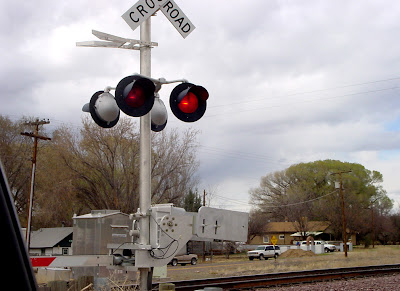
I am reminded that, in Prescott, I really miss the trains!


Admittedly, the modern train, consisting almost entirely of piggy-back trailers, is not nearly as interesting as the old-time mix of box cars, tankers, gondolas, and refrigerator cars, punctuated by the all-important caboose. (Anybody know where all those old cabooses went to retire? Maybe you can buy one on e-Bay...)

Once the train is gone, we can leave Skull Valley for the drive uphill back to Prescott. There's certainly a lot more to be said about Skull Valley, but not on this short visit. If you are curious, the Sharlot Hall Museum site has some
background reading.
 I'm not really sure which brand of tree this is; common enough that it might be an ash. Hoping that a reader may be able to help me out. Since this is a tree matter, I suspect it should be a male reader. Funny. It's been my experience that IDing flowers is a girl thing, while expertise in trees tends to be a guy thing.
I'm not really sure which brand of tree this is; common enough that it might be an ash. Hoping that a reader may be able to help me out. Since this is a tree matter, I suspect it should be a male reader. Funny. It's been my experience that IDing flowers is a girl thing, while expertise in trees tends to be a guy thing. Of course, being a civilized little city, Prescott is peopled with folks who have planted many, many ornamental fruit trees with beautiful spring blossoms and no intentions of producing fruit. The flowers above are an exception; I caught these up the hill at the Shrine of St. Joseph. Possibly a peach volunteer from a visitor's lunch. I have a little peach tree that came up from a seed I tossed; it has rewarded me with one peach.
Of course, being a civilized little city, Prescott is peopled with folks who have planted many, many ornamental fruit trees with beautiful spring blossoms and no intentions of producing fruit. The flowers above are an exception; I caught these up the hill at the Shrine of St. Joseph. Possibly a peach volunteer from a visitor's lunch. I have a little peach tree that came up from a seed I tossed; it has rewarded me with one peach. OK, I'm not quite sure just which of the ornamentals this cluster of buds represents. Anyone out there more expert with a suggestion? Mighty pretty in any event.
OK, I'm not quite sure just which of the ornamentals this cluster of buds represents. Anyone out there more expert with a suggestion? Mighty pretty in any event. Once the red-purple leaves have popped, the flowering plum is especially spectacular.
Once the red-purple leaves have popped, the flowering plum is especially spectacular. This tree was a huge white presence along Park Avenue. Possibly a flowering pear, very popular in Prescott.
This tree was a huge white presence along Park Avenue. Possibly a flowering pear, very popular in Prescott. Seeds of the Siberian elm appear early in spring, lending a lovely green to the local scenery. Looking at all those seeds (below), you can understand why this import has turned into an unwelcome guest tree in much of the country. My neighbor has been fighting a losing battle against the Siberian elm.
Seeds of the Siberian elm appear early in spring, lending a lovely green to the local scenery. Looking at all those seeds (below), you can understand why this import has turned into an unwelcome guest tree in much of the country. My neighbor has been fighting a losing battle against the Siberian elm.
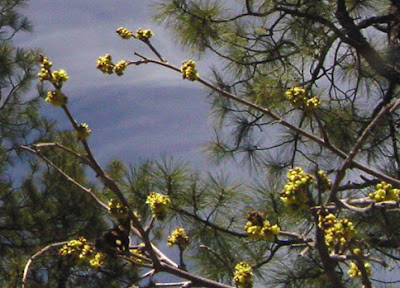 These small, unpretentious flowers were on a heavily blooming, fragrant squaw bush (three-leaf sumac for the politically correct; lemonade bush for the old-fashioned.) A flock of early butterflies was sipping nectar as I took pictures, but none would hold still long enough for a portrait.
These small, unpretentious flowers were on a heavily blooming, fragrant squaw bush (three-leaf sumac for the politically correct; lemonade bush for the old-fashioned.) A flock of early butterflies was sipping nectar as I took pictures, but none would hold still long enough for a portrait. Don't know anything about this red beauty. Tain't local -- something from the nursery.
Don't know anything about this red beauty. Tain't local -- something from the nursery. As is this popular ornamental bush.
As is this popular ornamental bush. And in conclusion, more Siberian elms, because they are simply very photogenic. And green.
And in conclusion, more Siberian elms, because they are simply very photogenic. And green.

